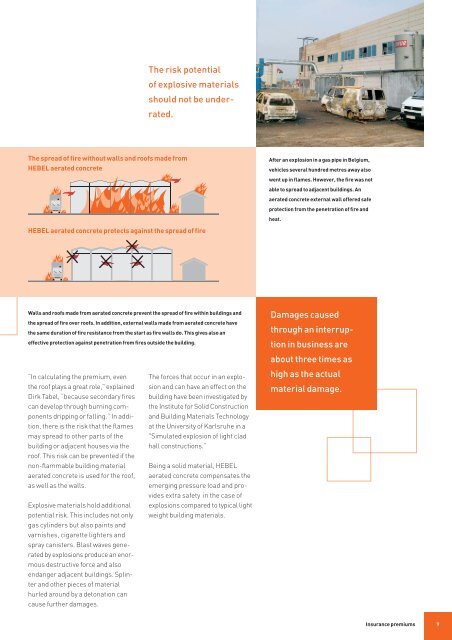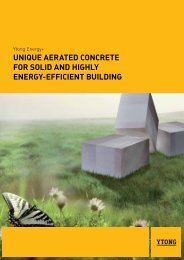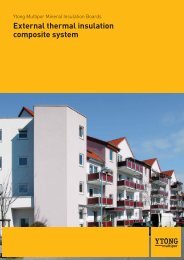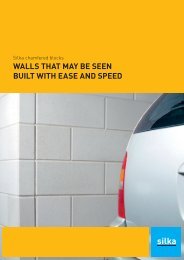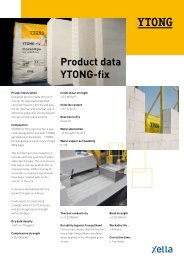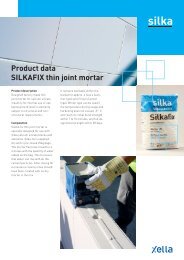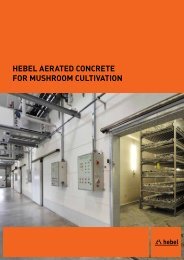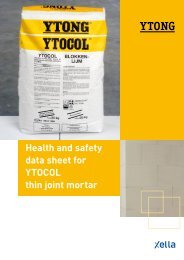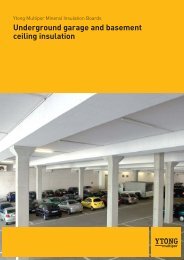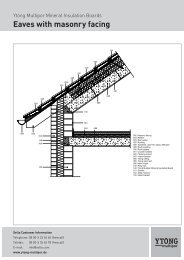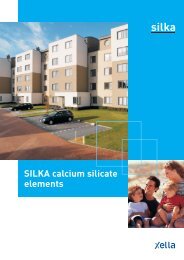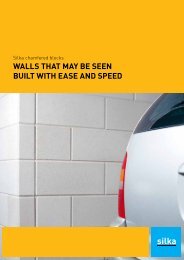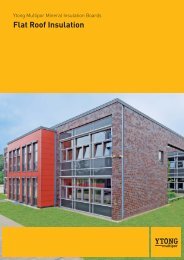Preventive explosion and fire protection using HEBEL ... - Xella UK
Preventive explosion and fire protection using HEBEL ... - Xella UK
Preventive explosion and fire protection using HEBEL ... - Xella UK
You also want an ePaper? Increase the reach of your titles
YUMPU automatically turns print PDFs into web optimized ePapers that Google loves.
The risk potential<br />
of explosive materials<br />
should not be underrated.<br />
The spread of <strong>fire</strong> without walls <strong>and</strong> roofs made from<br />
<strong>HEBEL</strong> aerated concrete<br />
<strong>HEBEL</strong> aerated concrete protects against the spread of <strong>fire</strong><br />
After an <strong>explosion</strong> in a gas pipe in Belgium,<br />
vehicles several hundred metres away also<br />
went up in flames. However, the <strong>fire</strong> was not<br />
able to spread to adjacent buildings. An<br />
aerated concrete external wall offered safe<br />
<strong>protection</strong> from the penetration of <strong>fire</strong> <strong>and</strong><br />
heat.<br />
Walls <strong>and</strong> roofs made from aerated concrete prevent the spread of <strong>fire</strong> within buildings <strong>and</strong><br />
the spread of <strong>fire</strong> over roofs. In addition, external walls made from aerated concrete have<br />
the same duration of <strong>fire</strong> resistance from the start as <strong>fire</strong> walls do. This gives also an<br />
effective <strong>protection</strong> against penetration from <strong>fire</strong>s outside the building.<br />
“In calculating the premium, even<br />
the roof plays a great role,” explained<br />
Dirk Tabel, “because secondary <strong>fire</strong>s<br />
can develop through burning components<br />
dripping or falling.” In addition,<br />
there is the risk that the flames<br />
may spread to other parts of the<br />
building or adjacent houses via the<br />
roof. This risk can be prevented if the<br />
non-flammable building material<br />
aerated concrete is used for the roof,<br />
as well as the walls.<br />
Explosive materials hold additional<br />
potential risk. This includes not only<br />
gas cylinders but also paints <strong>and</strong><br />
varnishes, cigarette lighters <strong>and</strong><br />
spray canisters. Blast waves generated<br />
by <strong>explosion</strong>s produce an enormous<br />
destructive force <strong>and</strong> also<br />
endanger adjacent buildings. Splinter<br />
<strong>and</strong> other pieces of material<br />
hurled around by a detonation can<br />
cause further damages.<br />
The forces that occur in an <strong>explosion</strong><br />
<strong>and</strong> can have an effect on the<br />
building have been investigated by<br />
the Institute for Solid Construction<br />
<strong>and</strong> Building Materials Technology<br />
at the University of Karlsruhe in a<br />
"Simulated <strong>explosion</strong> of light clad<br />
hall constructions.”<br />
Being a solid material, <strong>HEBEL</strong><br />
aerated concrete compensates the<br />
emerging pressure load <strong>and</strong> provides<br />
extra safety in the case of<br />
<strong>explosion</strong>s compared to typical light<br />
weight building materials.<br />
Damages caused<br />
through an interruption<br />
in business are<br />
about three times as<br />
high as the actual<br />
material damage.<br />
Insurance premiums<br />
9


